What Should Be Inside a Chicken Coop Today – 10 Unseen Items
Do you worry that your chicken coop might be missing something important? Keeping chickens happy isn’t just about the basics anymore.
With new knowledge and tools available, sometimes, we miss out on new items that can make our chicken lives even better. So let’s explore 10 things you might be surprised to learn should be inside your coop today.
What Should Be Inside a Chicken Coop
1. Nesting boxes
A nesting box, while not mandatory for your hens, greatly simplifies the process of egg collection by providing a designated area for them to lay their eggs. Without it, you might find yourself on frequent scavenger hunts for eggs that could be hidden under bushes, near outbuildings, or under porches.
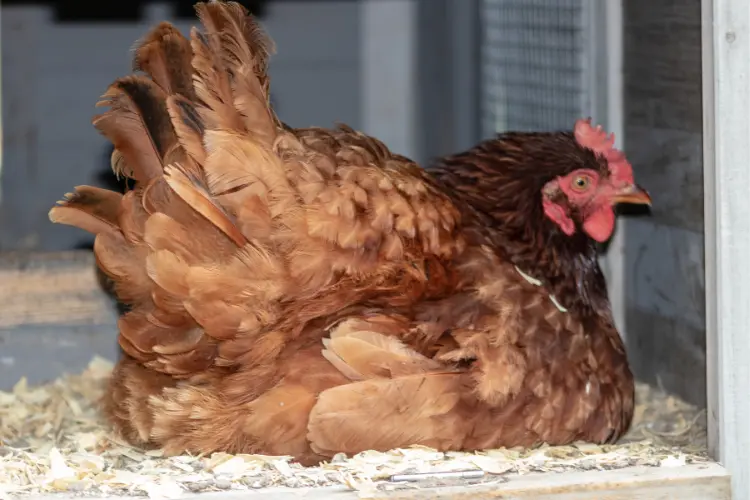
Nesting boxes streamline this process, with a general guideline being to provide one box for every three to four hens. Bear in mind, larger hens may require larger boxes, so choosing a size appropriate for the particular breed of your hens is crucial.
Guidelines for Chicken Coop Nesting Boxes
- Provide one nesting box for every 4-5 hens.
- Use nesting boxes that are approximately 12″x12″ in size.
- Install a rail in front of the boxes for easy landing and prevent broken eggs.
- Add a lip to the front of the nest to prevent fresh eggs from rolling out.
- Consider placing wooden eggs in the nest to encourage hens to lay there.
You may also consider a roll-away nest box as an alternative to the traditional nesting box. This design is especially useful if you’ve encountered problems with chickens eating or pecking at their own eggs.
Once an egg is laid in a roll-away nest box, it gently rolls into a hidden compartment. This not only ensures the egg’s safety from curious or peckish hens but can also keep the egg cleaner. If egg safety is a concern, or you’ve noticed egg-eating tendencies among your flock, a roll-away nest box might be an ideal solution for your coop.
In fact, one of the top-rated roll-away nest boxes on Amazon is the Homestead Essentials 3 Compartment Roll Out Nesting Box for Chickens. Not only is it efficient with its roll-away design, but it’s also durable and spacious with its three compartments, making it perfect for medium to large-sized coops.
If egg safety and cleanliness are of paramount importance to you, this might just be the perfect addition to your chicken coop.

3. Roosting Bars
Emulating the natural sleeping habits of wild chickens, who roost or sleep in trees, is an important part of designing chicken coop interiors.
Domesticated chickens retain these tendencies, hence incorporating roosting bars in the coop simulates this natural environment, providing them with a safe and comfortable place to rest at night. It’s a crucial part of creating a healthy, comfortable living space for your chickens that respects their natural behaviors.

Guidelines for Roosting Bars in a Chicken Coop
- Do not use plastic or metal pipes as roosting bars because they are slippery and unsuitable for chickens.
- In warmer regions, 2x2s can be used as freezing isn’t a significant concern.
- For colder climates, use flat-side-up 2x4s to enable chickens to cover their toes with feathers, reducing the risk of frostbite.
- Elevate the lowest roosting bar at least 2 feet from the ground.
- In a stair-step design, roosting bars can be spaced 12 inches apart.
- Keep a distance of 18 inches between each roosting bar and the same distance from the wall.
- Allocate 8-10 inches of roosting space for each chicken.
5. Chicken Feeders and Waterers
Clean water and appropriate feed are essential for your chickens’ well-being. Invest in durable and easy-to-clean waterers and feeders suitable for the size of your flock. Choose designs that prevent contamination and keep the water and feed fresh.
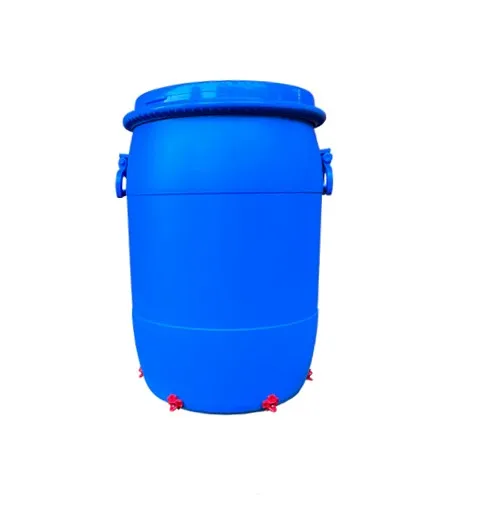
Additionally, regularly monitor and refill the waterers, ensuring they remain clean and free from bacteria or algae. If you’re looking for a hassle-free solution that ensures your chickens have access to clean water without the constant need for refilling, consider the Revolutionary Chicken 16-gallon Blue Barrel Waterer. This innovative product is designed to minimize the effort required on your part while maximizing the well-being of your flock.
Read also: Best Chicken Water Cups 2023: Ultimate Buyer’s Guide
6. Bedding Material
Adding bedding material to the floor of your chicken coop is important for moisture absorption, odor control, and providing a comfortable surface for your chickens. Popular options include sand, wood shavings, or hemp bedding.
Read also: The Ultimate Guide to Using Hemp Bedding For Chickens
Guidelines for Bedding in a Chicken Coop
- Start with a 4-inch deep layer of bedding during the teenage stage of your chickens.
- Gradually increase the bedding depth to 8 inches as your chickens grow to full size.
- Fluff up the bedding with a pitchfork every few days, adjusting frequency based on coop design and number of chickens.
- Add fresh bedding to the existing bedding weekly or biweekly, depending on the coop flooring setup and flock size.
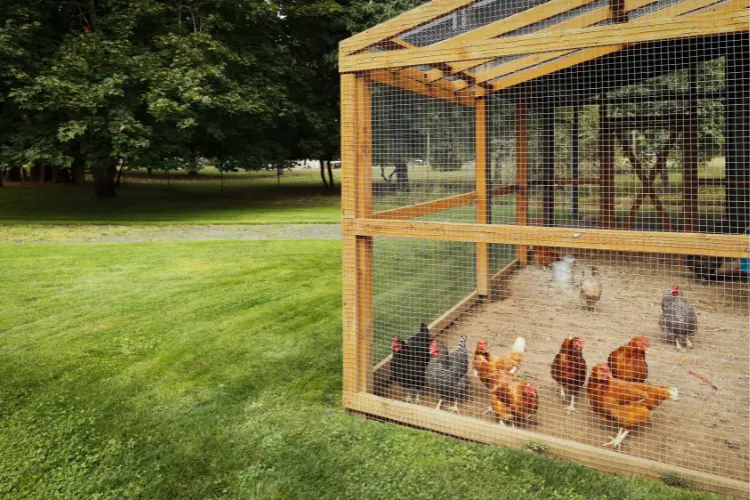
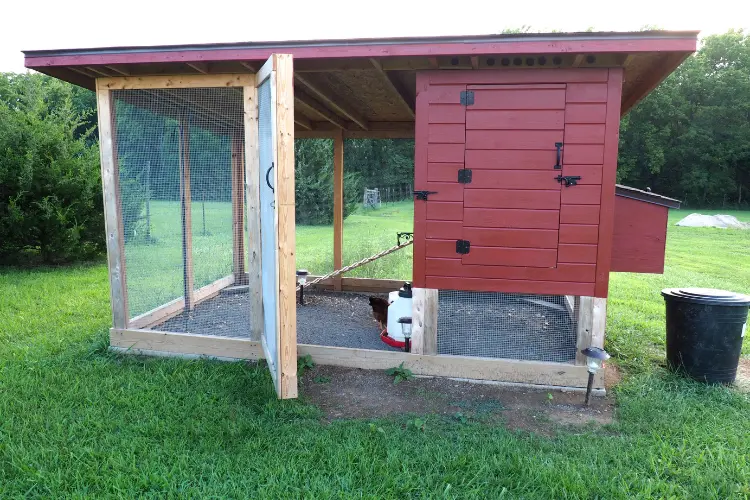
7. Insulation
Insulating your chicken coop is crucial for maintaining a comfortable environment throughout the year. It helps regulate the temperature, keeping it warm in winter and cool in summer, which is essential for the health and well-being of your chickens.
Moreover, use insulation materials like fiberglass or foam board to cover the walls, roof, and floor, ensuring no gaps or leaks. Good insulation reduces energy costs and prevents frostbite in colder weather or excessive heat buildup in warmer climates.
Don’t forget to consider proper ventilation to avoid moisture buildup. Insulating your coop creates a climate-controlled space that promotes the overall productivity and happiness of your flock.
Here is how you can determine whether or not to insulate your chicken coop:
To Insulate:
- Chickens Count: If you have less than 10 chickens, their body heat may not be sufficient to keep the coop warm, so insulation might be necessary.
- Breed Size: If you raise small breeds, they may have less body mass to generate warmth and might benefit from insulation.
- Purpose: Chickens bred specifically for egg laying may have different temperature needs than dual-purpose breeds.
- Comb Size: Chickens with large combs are more susceptible to frostbite, so insulation could protect them in cold climates.
- Climate: If your winters are extremely cold (between -40F to 0F), lengthy, windy, or frequently wet, the insulation would be beneficial to keep the chickens comfortable.
Do Not Insulate:
- Chickens Count: If you have ten or more chickens, their collective body heat might keep the coop warm enough without the need for insulation.
- Breed Size: Medium or large breed chickens may generate enough heat themselves, reducing the need for insulation.
- Purpose: If you have dual-purpose breeds, they might have a higher tolerance for colder temperatures.
- Comb Size: Chickens with small combs that are less susceptible to frostbite may not need an insulated environment.
- Climate: In milder winter conditions (between -10F to +30F or warmer), where you can ensure that the chickens stay dry and out of the wind, insulation might not be necessary.
8. Air Ventilation
Air quality is a crucial factor to consider regarding your chicken coop interior layout. One of the main contributors to poor air quality is ammonia, which is released from fresh or moist chicken feces. High levels of ammonia can negatively affect the health of your chickens.
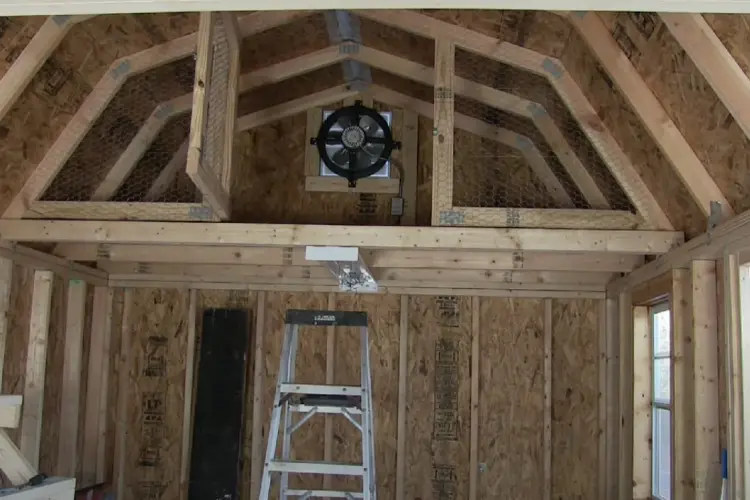
To control ammonia levels, it is important to ensure adequate ventilation in your coop. Strategically position vents near the top of the coop to remove contaminated air without causing drafts.
By maintaining good air quality, you create a healthier environment for your chickens and promote their overall well-being.
9. Litter Trays
Litter trays are a valuable addition to any chicken coop as they help with waste management and sanitation. Chickens tend to defecate while roosting, and having a litter tray underneath the roosting area makes it easier to collect and remove their waste.
Regular cleaning of the litter tray is important to control odors and maintain a clean environment for your chickens.
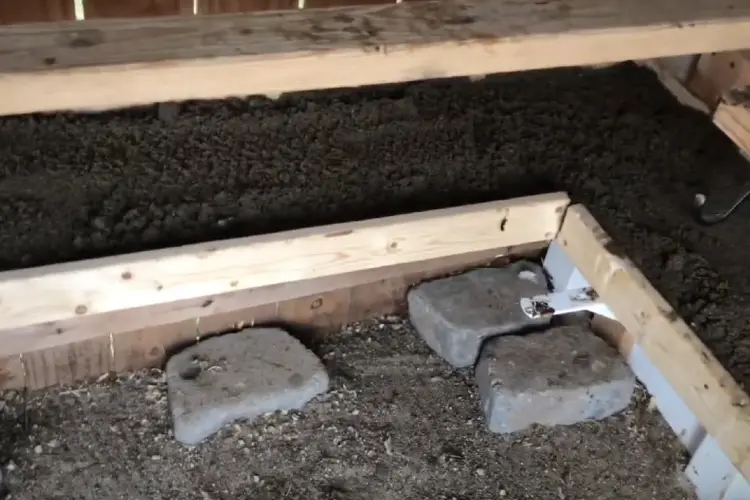
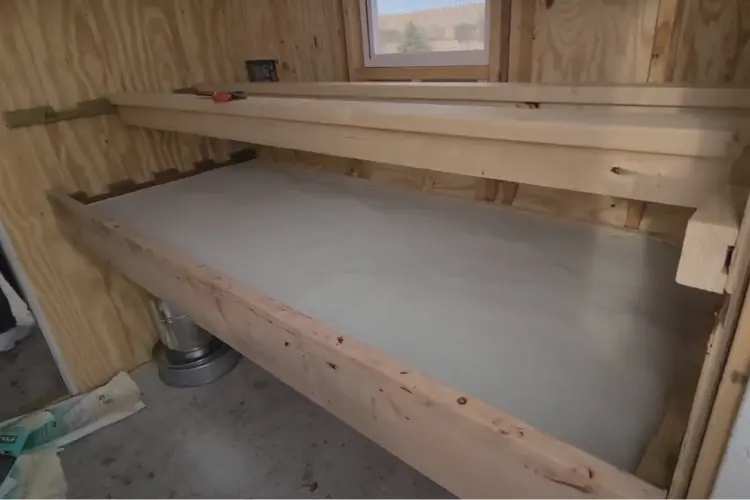
To use a litter tray effectively, place it beneath the roosting bars or in areas where chickens frequently roost. Choose a tray that is easy to remove and clean. Consider lining the tray with absorbent materials such as wood shavings to help absorb moisture and control odors.
10. Light
Having electrical access in the coop offers the benefit of having light. Light serves multiple purposes, including facilitating chores during nighttime and promoting increased egg production because egg-laying chickens prefer laying eggs with light.
It’s important to note that chickens require approximately 14 hours of daylight to lay eggs efficiently. In winter, when daylight hours are shorter, chickens naturally lay fewer eggs or may not lay at all.
If your objective is to maximize egg production, you can install a timer-controlled light that turns on early in the morning to supplement the natural daylight.
What Should Not Be Inside a Chicken Coop
If you know what should be inside a chicken coop, there are also a few things not to put inside to ensure the health and safety of your chickens. Here are some items you should avoid placing inside the coop:
- Poisonous plants – Some plants can be toxic to chickens if ingested. Avoid placing any poisonous plants inside or near the coop.
- Pesticides and chemicals – Keep pesticides, insecticides, herbicides, and other chemicals away from the coop. These substances can be harmful or even fatal to chickens if they come into contact with them.
- Moldy or spoiled food – Do not store moldy or spoiled food inside the coop. Chickens should only be given fresh and appropriate feed.
- Sharp or hazardous objects – Remove any sharp objects, broken glass, nails, or other hazardous items from the coop. Chickens may accidentally injure themselves or ingest these objects, leading to health problems.
- Small or loose bedding materials – Avoid using small or loose bedding materials that chickens can ingest and potentially choke on. Opt for larger, safer bedding options.
- Excessive moisture or dampness – Avoid allowing excessive moisture or dampness inside the coop. Wet bedding can lead to fungal growth and respiratory issues for the chickens.
Read also: Best Chicken Coop for 10 Chickens: 2023 Reviews & Guide
Final Thoughts: What Should Be Inside a Chicken Coop
Modern chicken coops should prioritize the well-being and productivity of the flock while considering their natural behaviors and requirements. Furthermore, incorporating sustainable practices like using eco-friendly materials and implementing efficient waste management systems aligns with the growing trend of environmentally conscious chicken rearing.
By integrating these items, a well-designed chicken coop can provide a safe, comfortable, and stimulating environment that fosters the health, happiness, and productivity of the chickens.

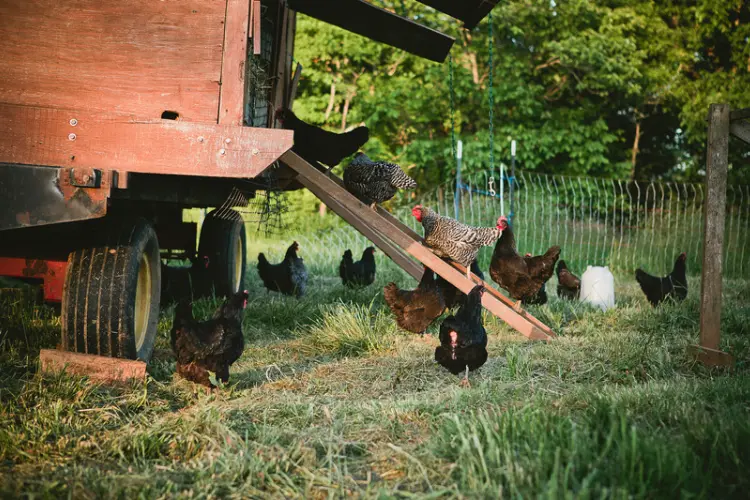



Comments are closed.